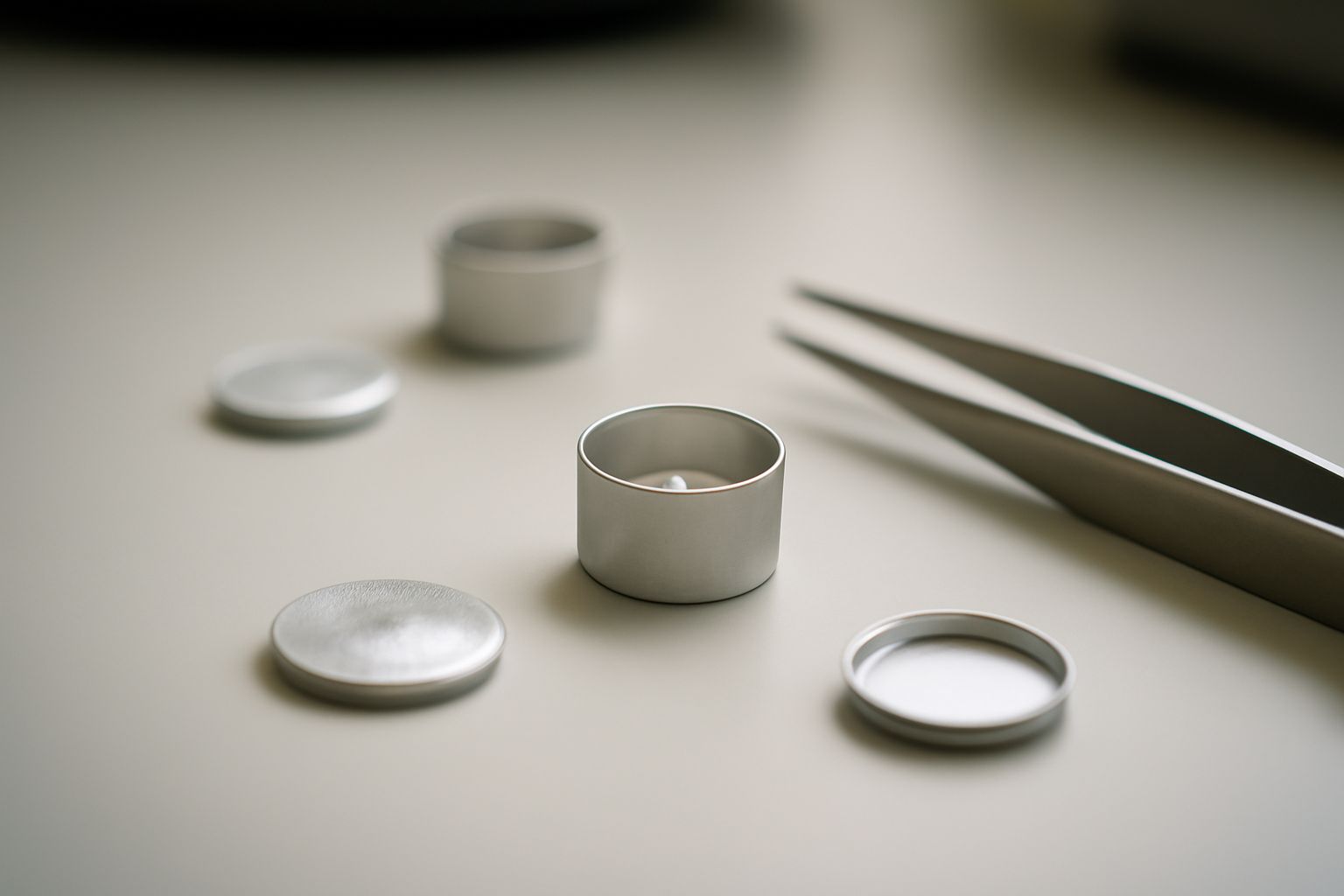Your cart is empty.
shop now
Your cart is empty.
shop now
Labs often face failures due to DSC crucible contamination, cracking, or poor sealing. These issues risk sample loss, unreliable data, and extra testing costs.
Overcoming DSC crucible problems requires using non-reactive materials, stable construction, and ensuring a proper seal. Always match pan size and test conditions for accurate, repeatable thermal analysis results.

Simple habits help maintain quality results in my lab. I learned that choosing the right crucible and following good practice avoids most common problems. Let’s examine how to keep tests on track and your equipment running smooth.
One bad batch can ruin a week of lab work if crucibles contaminate your samples. Contaminants often come from improper cleaning, reactive materials, or poor-quality crucibles.
I avoid contamination by picking high-purity platinum or aluminum for most tests and following strict cleaning protocols. Proper storage and fresh gloves also reduce unwanted sample exposure.
| Contamination Source | How It Happens | How to Prevent |
|---|---|---|
| Residual Chemicals | Poor cleaning after the last run | Follow detailed cleaning with solvent or heat |
| Reactive Pan Materials | Sample reacts with pan and releases new phases | Use platinum or high-purity aluminum |
| Lab Dust or Grease | Improper handling introduces foreign particles | Use tweezers, clean workspace, gloves |
Following up-to-date cleaning protocols improves reliability. I have seen a clear difference in DSC reproducibility after adopting a stricter cleaning checklist.
Cracked pans waste precious samples and delay projects. Most cracks happen when pans face abrupt temperature changes or incompatible chemicals.
I use crucibles with stable thermal properties and choose those rated for the test’s temperature. Pre-conditioning pans and slow ramp rates stop most cracks before they start.
| Cracking Cause | Common Scenarios | Best Solutions |
|---|---|---|
| Thermal Shock | Fast temperature ramp, no pre-warming | Slow heating, pre-condition pans |
| Low-Quality Material | Cheap alloy pans with poor thermal stability | Order pans with documented heat capacity |
| Chemical Attack | Acidic or basic samples damage pan structure | Use ceramic pans for harsh environments |
After switching to ceramics for strong acids and adjusting the heating rate, I eliminated almost all cracks in tough runs.
Bad seals can lead to volatile sample loss, leaks, and noisy data signals. Many results fall apart simply because the pan lid was not closed right.
I double check for correct pan-lid match, replace worn or bent lids, and use a proper crimping tool for a tight seal on volatile or reactive samples.
| Seal Problem | Impact on Testing | How to Fix |
|---|---|---|
| Loose Lid | Sample leaks or picks up moisture | Use new lids, apply crimp tool evenly |
| Poor Fit | Unmatched pan and lid from different suppliers | Purchase matched sets from one brand |
| Damaged Seal Lip | Lid no longer sits flat | Discard and use a new, undamaged lid |
Good sealing is especially critical for volatile substances. I always order extra lids and test fit before sensitive runs to avoid errors in mass loss data.
Too small, and the sample overflows. Too large, and the material spreads out, ruining sensitivity and making heating uneven.
I match crucible size to sample mass and follow equipment guidelines. Clear product charts and experience help me pick a pan that avoids both waste and bad peaks.
| Size Issue | Impact | Solution |
|---|---|---|
| Pan too small | Overflow, sample burns or spills | Use recommended volume for material type |
| Pan too large | Signal weak, temp uneven, poor baseline | Pick pans that match calorimeter specs |
| Inconsistent fill | Unrepeatable results | Always weigh pans before each run |
Proper sizing is explained in most scientific instrument guides and has saved me rework and lost data over the years.
The right approach and correct crucible choice keep DSC issues from affecting your lab. Materials, sealing, cleaning, and sizing all must work together for reliable thermal analysis results.
Contact Our Technical Team for DSC Crucible Support